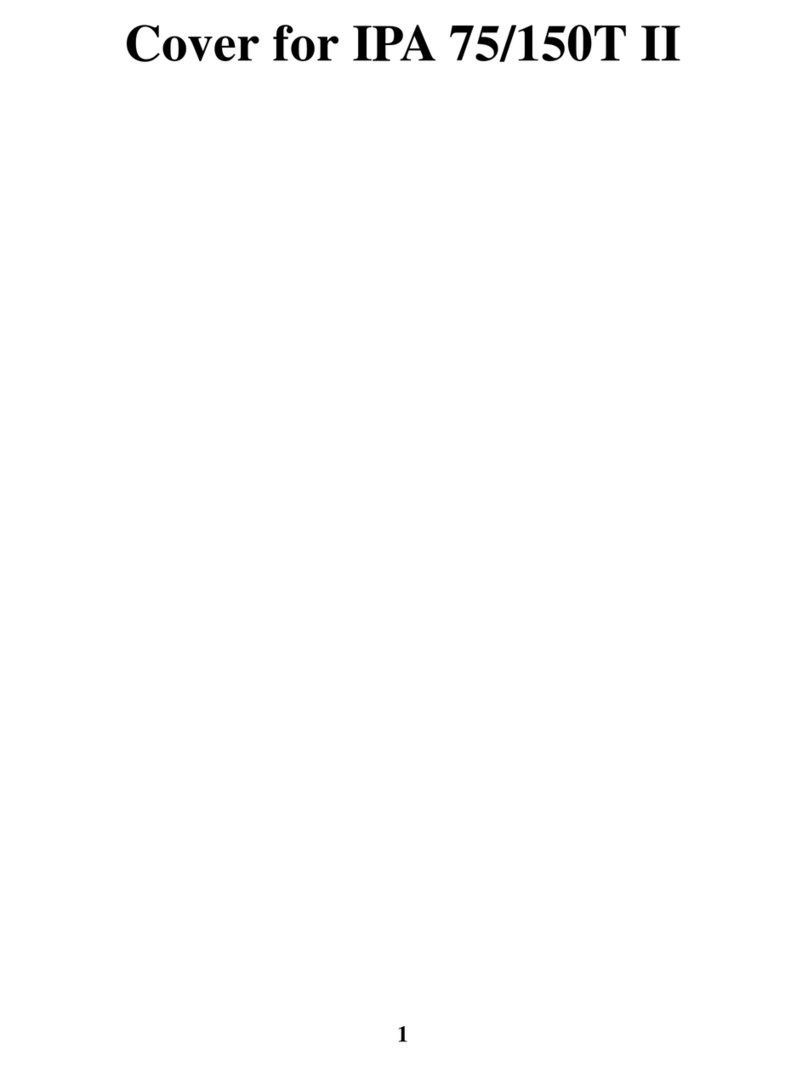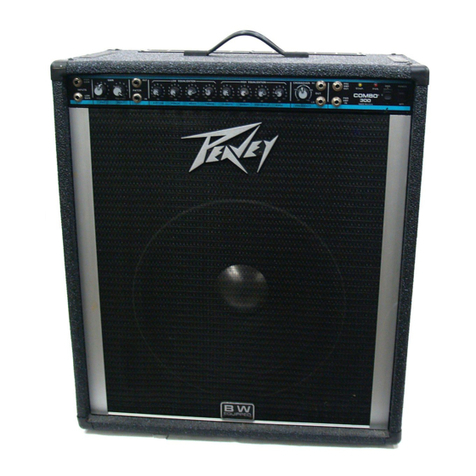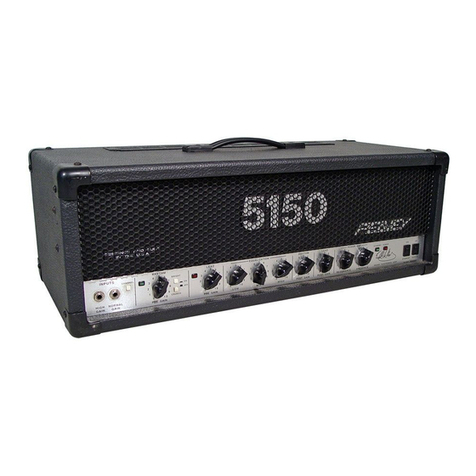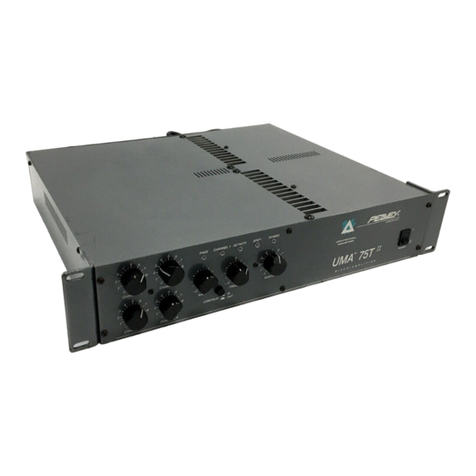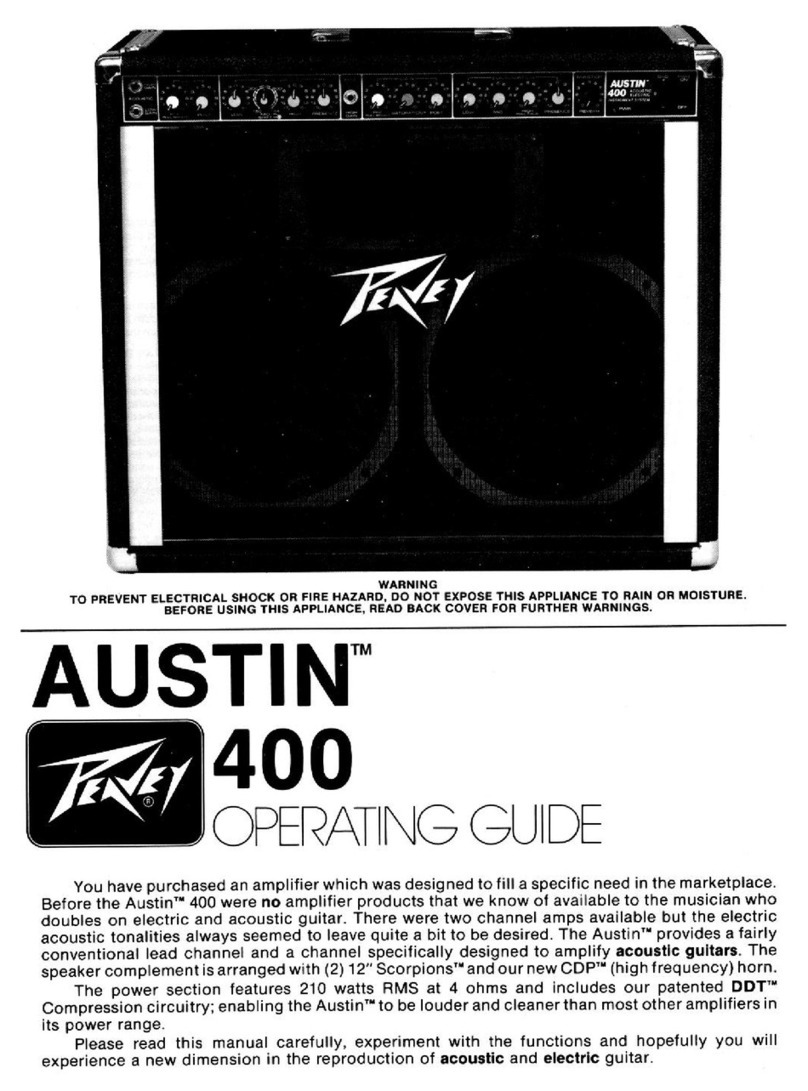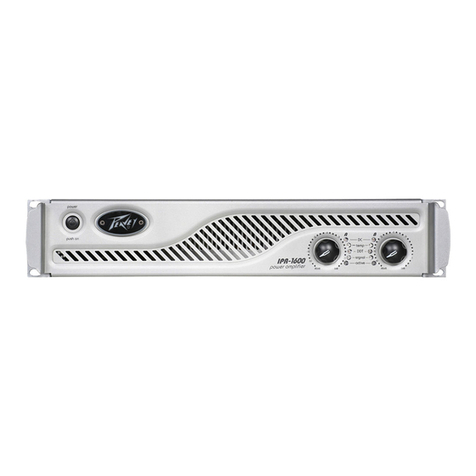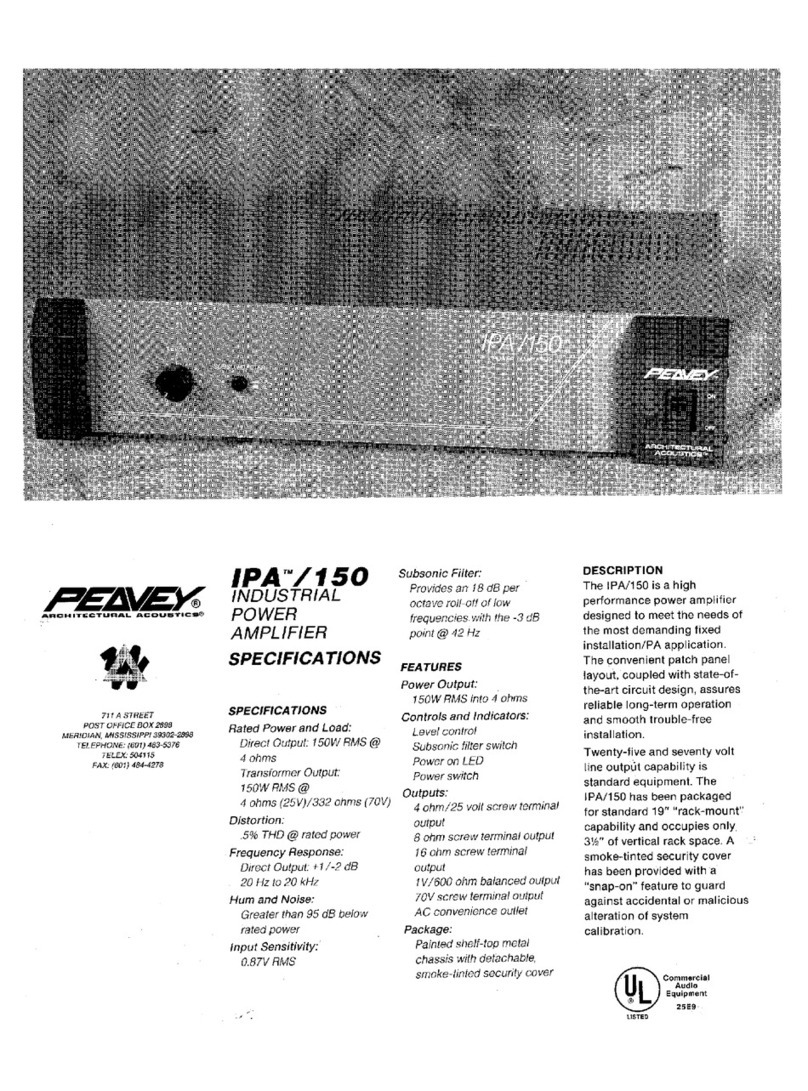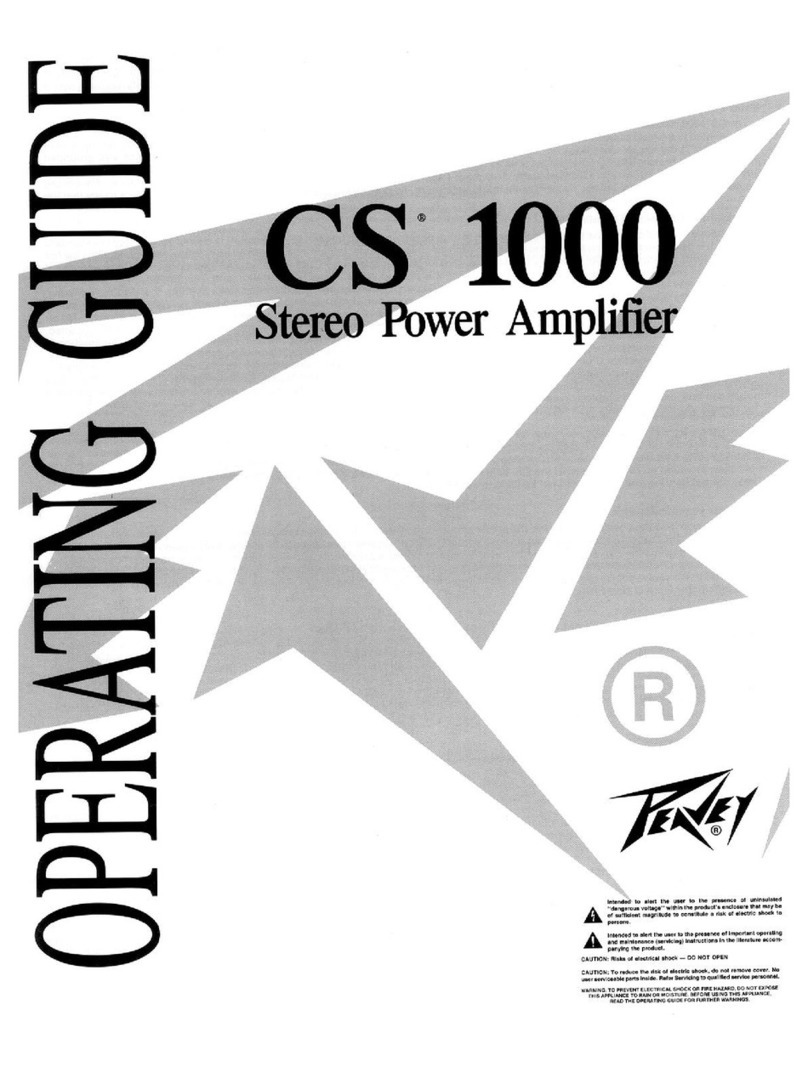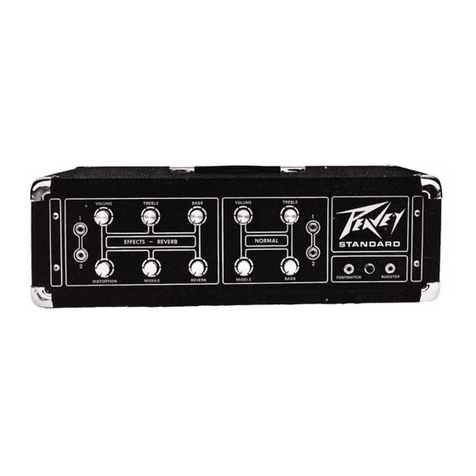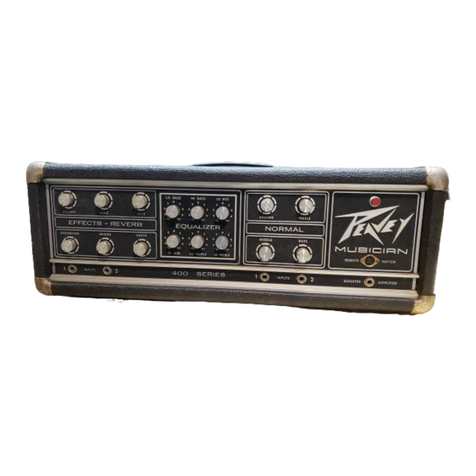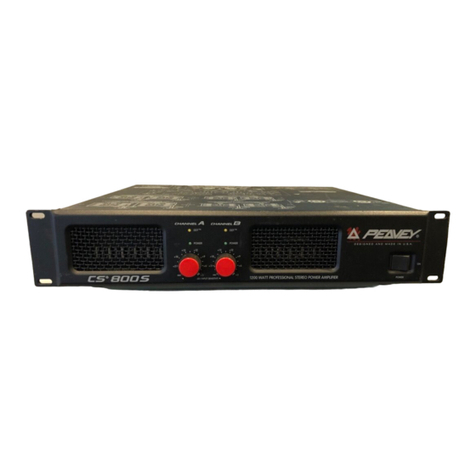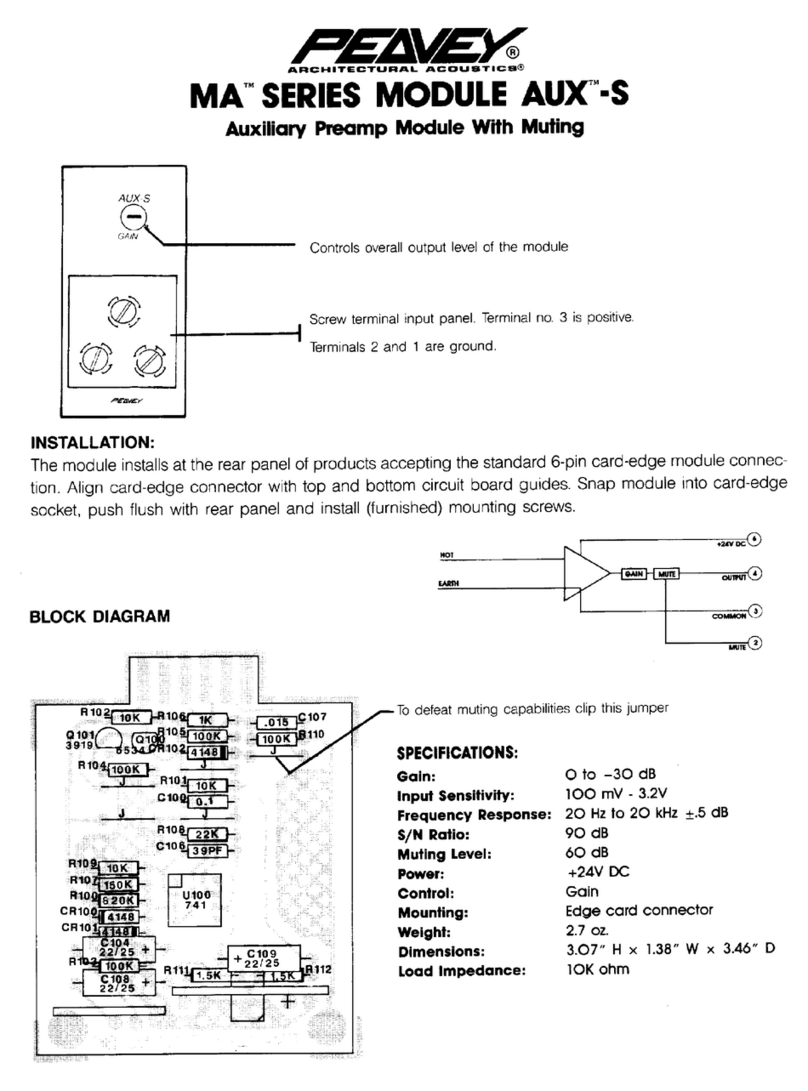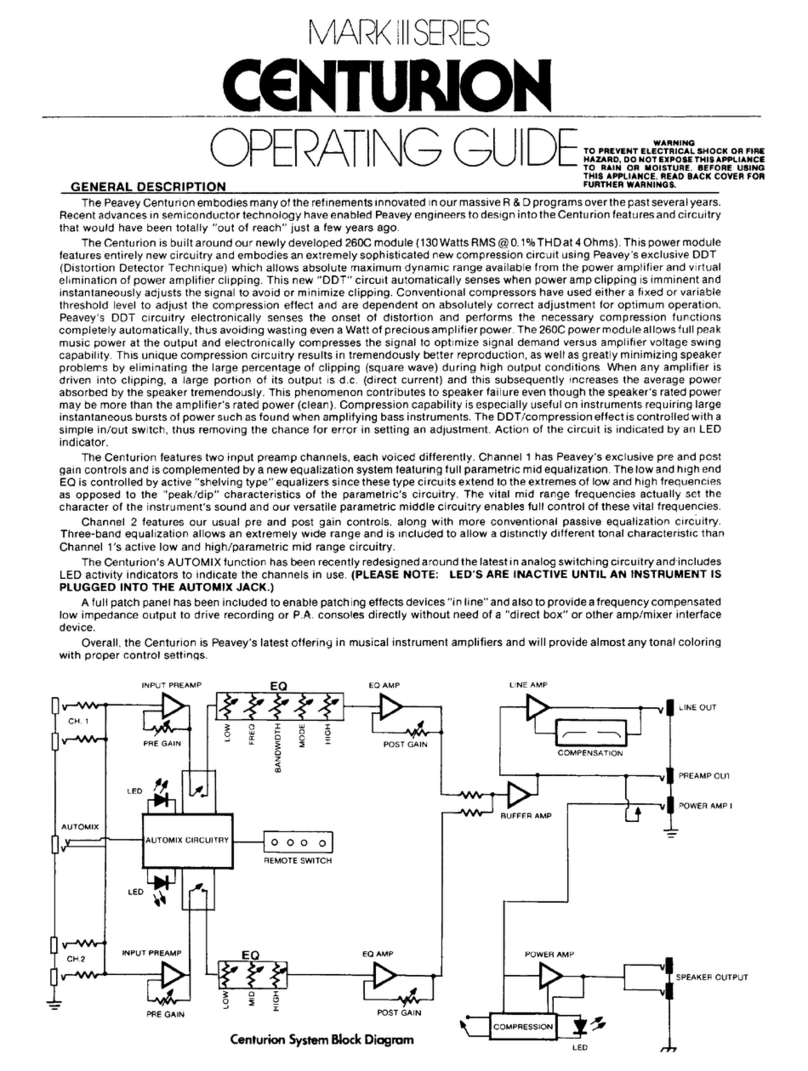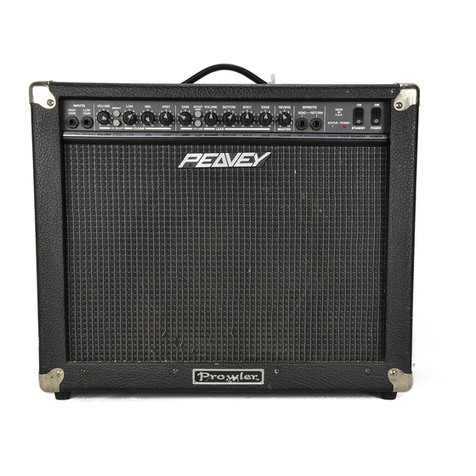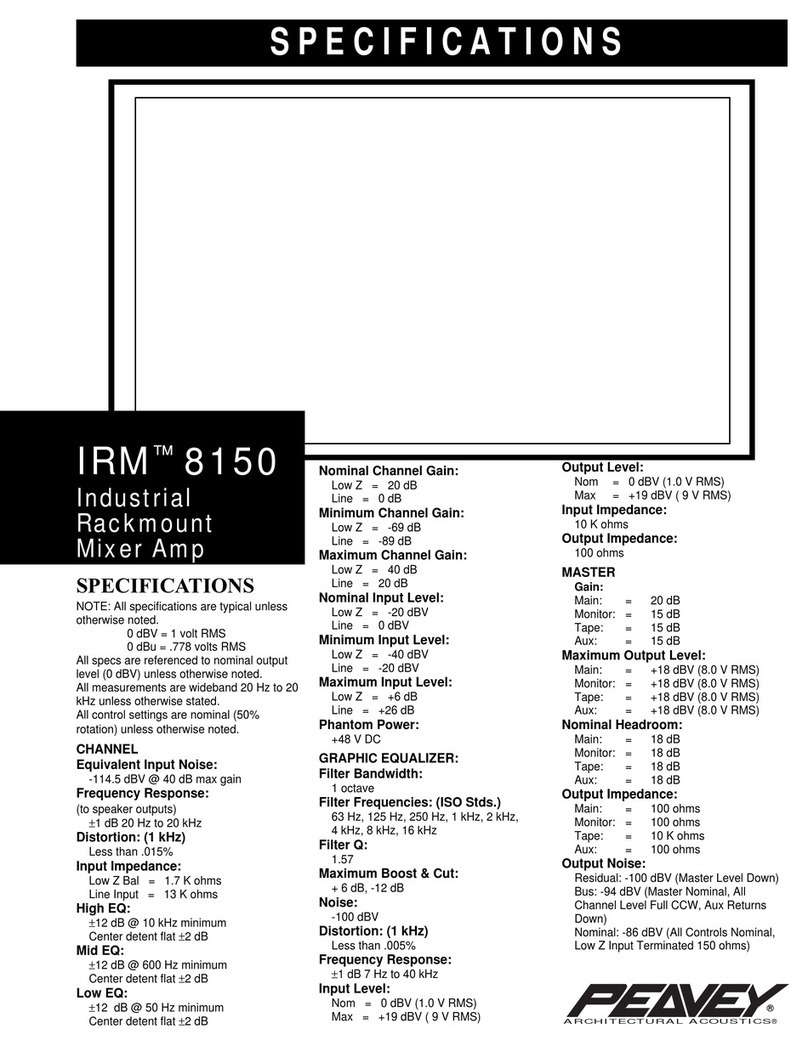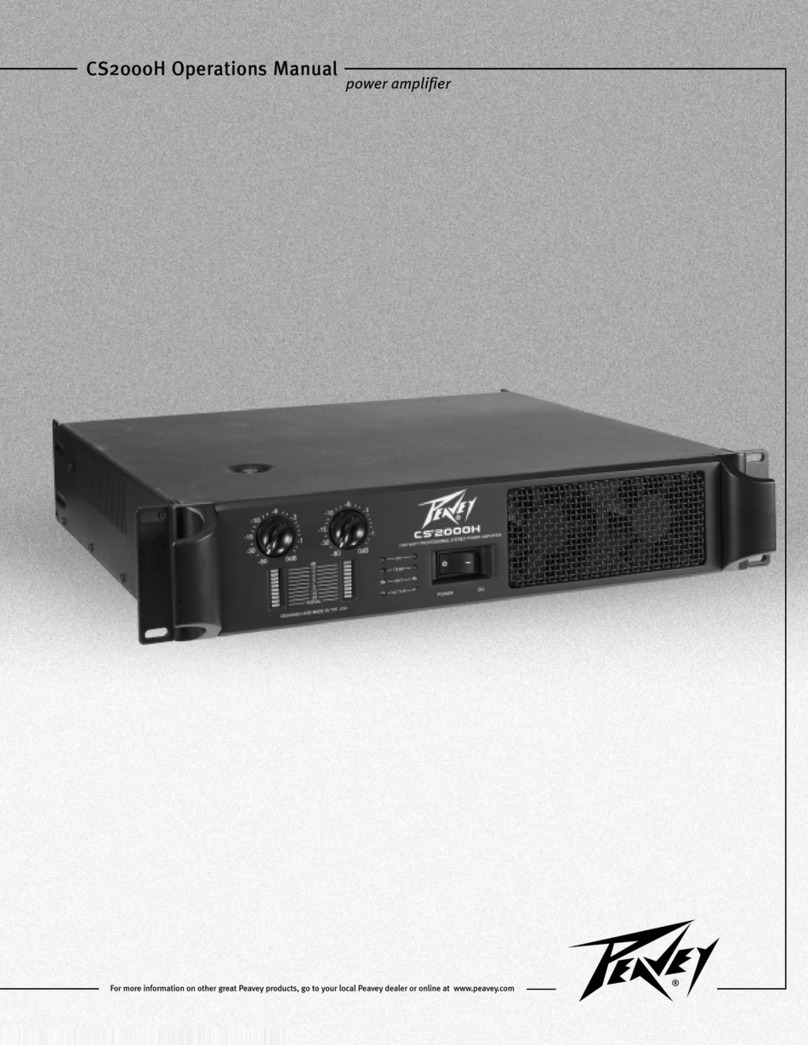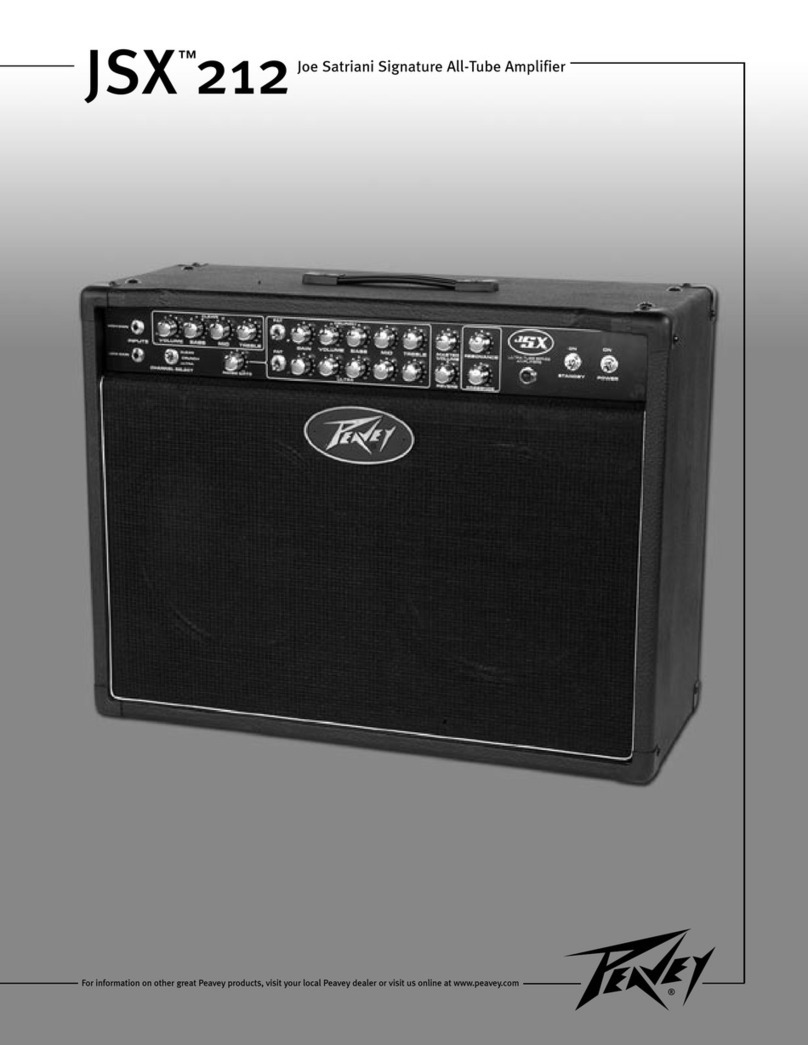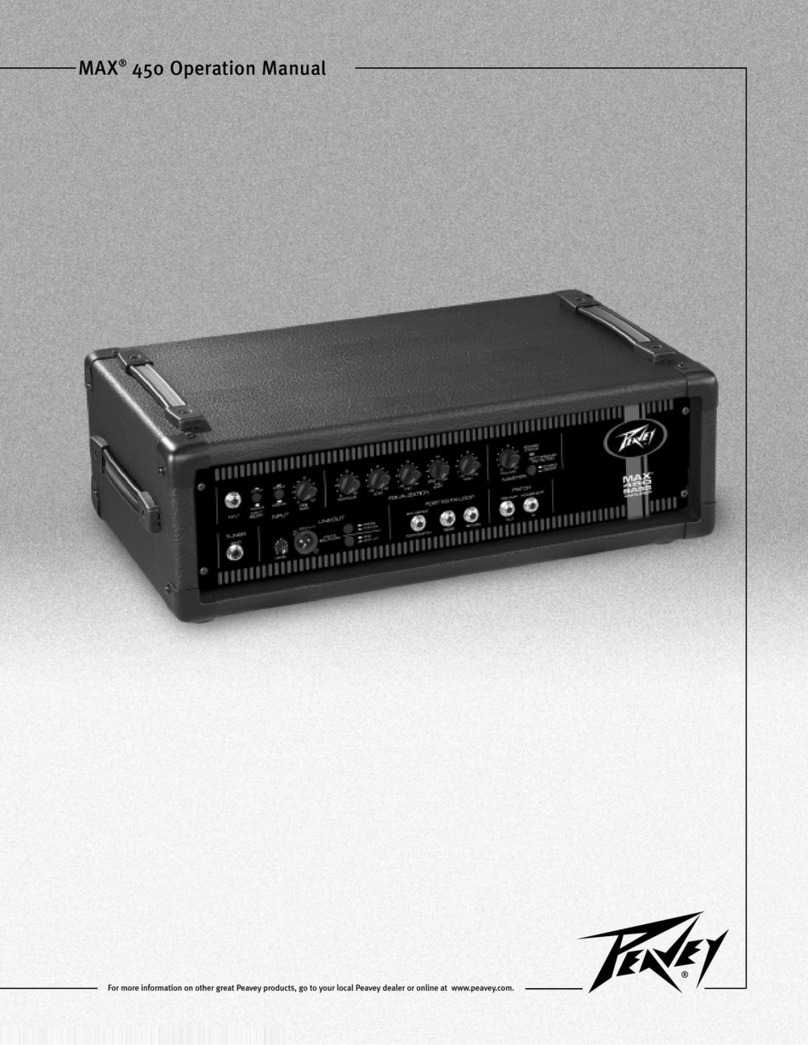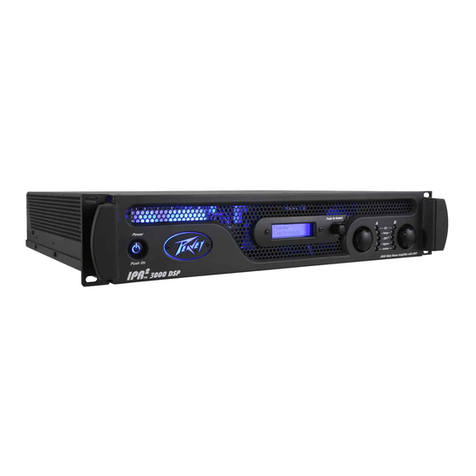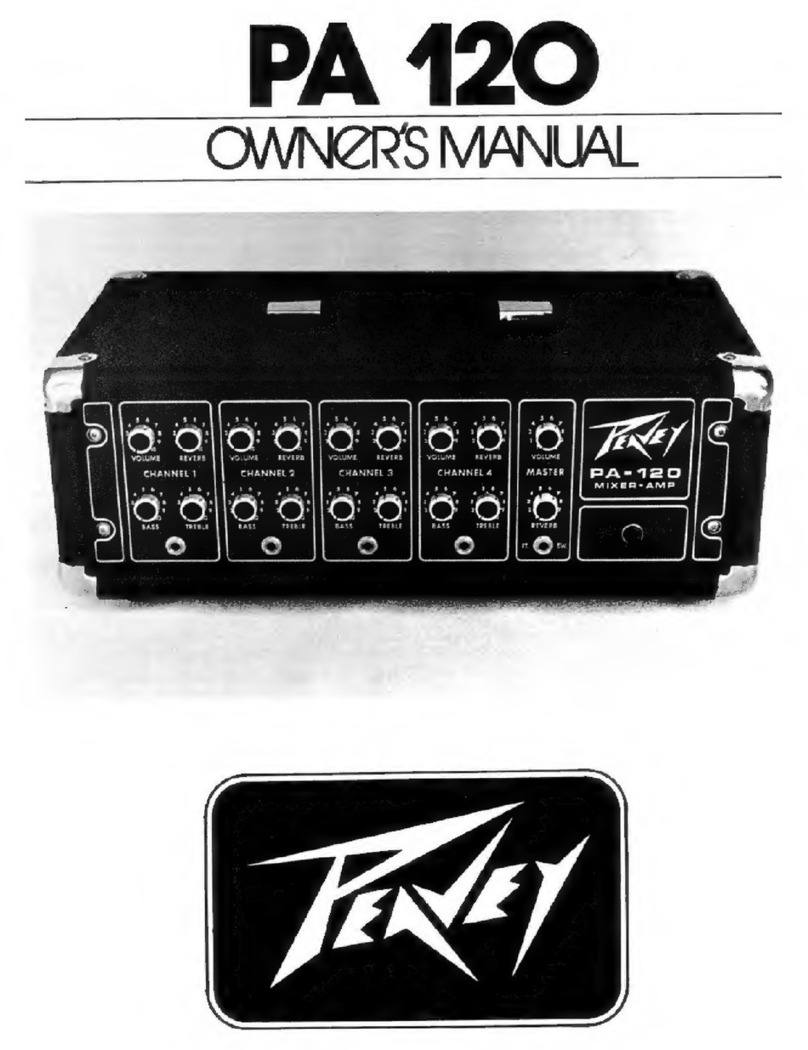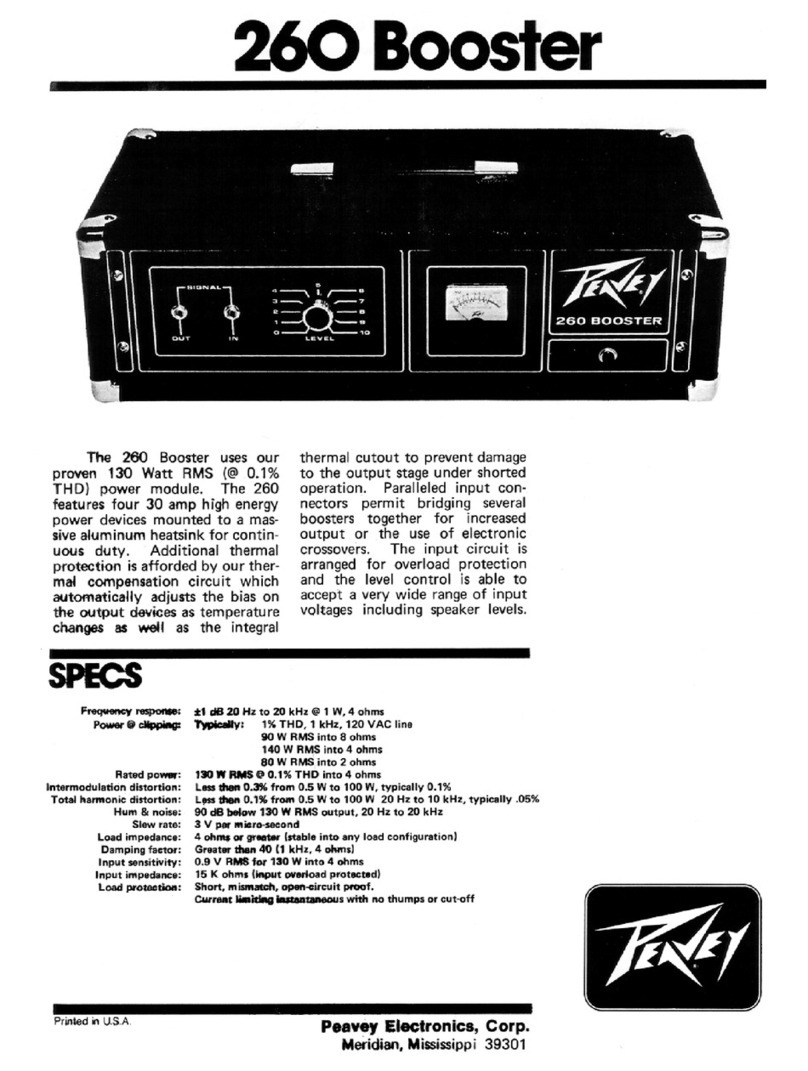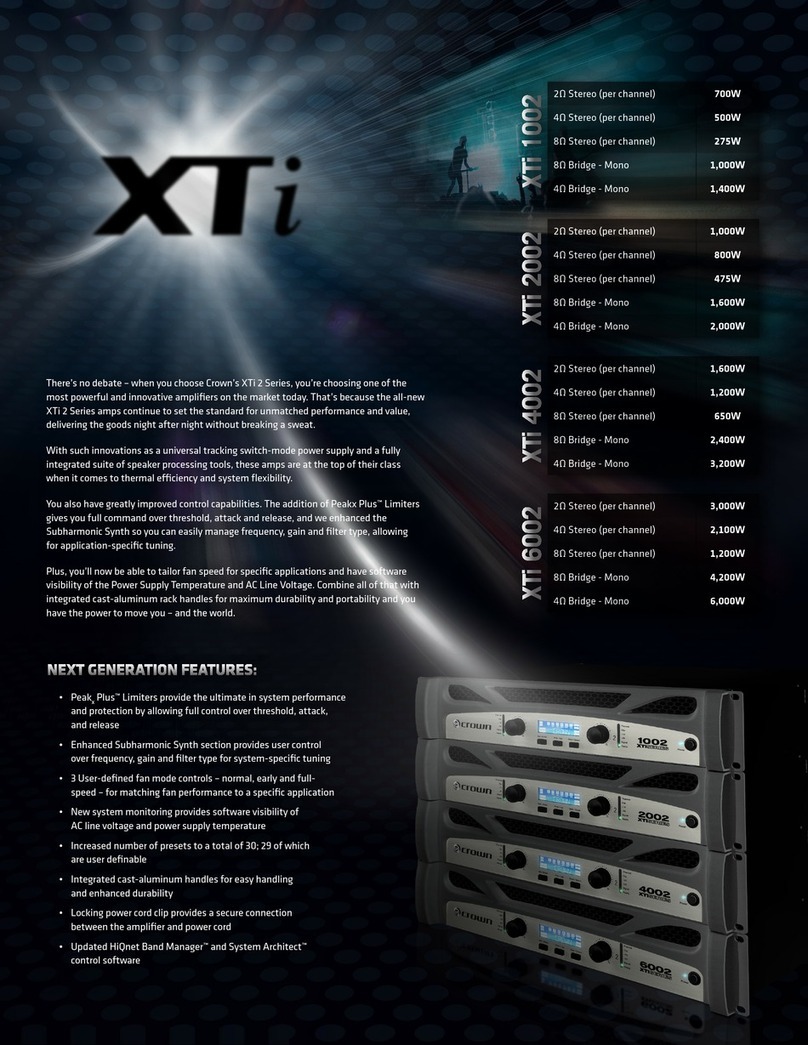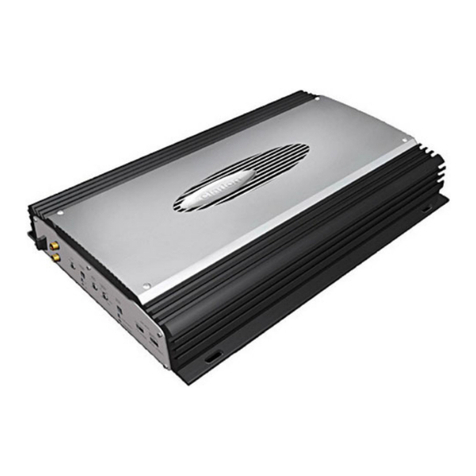
DECA/424
SPECIFICATIONS:
FREQUENCY
RESPONSE:
‘•0»-l-5db
10
Hz
to
20
kHz
@
1W
RMS
into
4
ohms.
RATED
POWER
OUTPUT:'
200
Wans
RMS
per
channel
:nlo
4
ohms
with
less
than
0.3%
Total
Harmonic
Distortion
TOTAL
HARMONIC
DISTORTION*
Less
than
0.3%
@
200
watts
RMS
per
channel
Into
4
ohms
TRANSIENT
INTER
MODULATION
DISTORTION:
None
Present
(0%TIM)
OUTPUT
SLEW
RATE:
The
am
pli
tier
outp
ut
slew
rate
Is
I
nterna
I
ly
coniro
n
eO
lo
opU
m
izB
p
h
ase
linearity
ano
improve
transient
response.
Due
to
the
nature
of
the
amplifier
design
and
the
internal
signal
conditioning
circuitry,
it
cannot
slew-rate
limit,
HUM
A
NOISE:
Greater
than
85
d6
bdiow
full
power
(20
H2
to
20
kHz)
INPUT
SENSITIVITY:
1
.(3V
RMS
for
200
watts
into
4
ohms
LOAD
PROTECTION:
Short
clfcu^t
curreni
limll.
Thermal
overload.
Turn
oh
ar>d
turn
off
transient
muting.
THERMAL:
Independent
automatic
thermal
channel
shutdown
with
front
panel
Indicafors
LOAD
IMPEDANCE:
4
ohms
or
greater
(unconditionally
stable
into
any
load
contig
jrahon
or
arty
signal
condition
and
level
at
the
input)
FRONT
PANEL
INDICATORS:
10
segment
LEO
arrays
indicating
standby
status
and
percent
power
output
level
DOT**
LED
activation
indioators
Thermal
fault
LED
activaiton
indicatora
Output
Line
Fault
LEO
indlcaiors
(short
circuit
DC.
etc
)
POWER
CONSUMPTION:
500
watts.
120
VAC,
50/60
Hz
(domeetic
modal)
DIMENSIONS:
19"
W
K
35'
H
X
14"
D
WEIGHT:
27
lbs.
'DDT
Disabled,
meaaurad
al
1
kHz
The
0©ca*’/424
is
manufactured
under
US.
patent
#4,316,053
and
five
patents
pending.
CLASS
B
COMPLfTING
DEVICE:
INFORMATION
TO
USER
This
equipment
generates
and
uses
radio
frequency
energy
and
if
not
Installed
and
used
property,
that
is,
in
accordance
with
the
man
uf
act
u
ref's
instructions,
may
cause
interie
re
nee
to
radio
and
television
reception
It
has
been
type
tested
and
found
tocomplywiththe
limits
fora
Class
B
computing
device
in
accordance
with
thespecificationainSubf^rt
Jof
Partl5
of
FCC
Rules,
which
are
designed
to
provide
reasonable
protection
against
such
interference
in
a
residential
installation.
However,
there
is
no
guarantee
that
interference
will
not
occur
ir>
a
particular
installation.
It
this
equipment
does
cause
interference
to
radio
or
television
reception,
which
can
be
determined
by
turning
the
equipment
off
and
on,
the
user
is
encouraged
to
try
lo
correct
the
interference
by
one
or
more
of
the
following
measures;
e
reorient
the
receiving
antenna
e
relocate
the
equipment
with
respect
to
fhe
receiver
e
move
the
equipment
away
from
the
receiver
•
plug
the
equipment
into
a
different
outlet
so
that
the
equipment
and
receiver
are
on
different
branch
circuits.
If
necessary,
theusershould
consuitthedealeror
an
experienced
radio-television
technician
for
additional
suggestions.
The
user
may
find
the
following
booklet
prepared
by
the
Federal
Communications
Commislon
helpful;
"How
to
Identify
and
Hesoive
Badio-TV
tnierfarence
Problems"
This
booklet
is
available
from
the
U.S.
Government
Printing
Office,
Washington,
DC
20402,
Stock
No.
004-000-00345-4,
EKPOSURt
TOeXTBeMetVHlQH
WiSfi
LEVELSPMr
CAUSE
A
^gBWiyiENTMBAniNG
LO&S
INOlViPUAlSVABYCCHSlDIBAat*
IN
$W3CE^IBILITT
TO
Ndt$EINOJJCeOri6ABtNa
uOSS.BUT
NfAHtY
SVenyOME
Will
LOSE
EOLC
MSaBiNC
ir
EVPOSS
rOSUCCiClENtLV
INTENSE
N06E
FOA
A
SUFFICIENT
TtUE
THE
D
S
QOytFWrtjhTSCC&UPATlOf'WL
SAFETr
ANO
iiEalTH
ADMUISTRATON
<0SHA1
mas
e«eiFlEO
TME
SOlLOWTNG
C^MISSiELE
NOIBE
lEVTL
BtKiSuBES
OVUnONMB
DAY
m
HOun»
aenm
u«a.eML<LOv
ne»nMK
ACCOROinG
TO
fAB
Oil
FfPOSLJ
IM
OP
AMT
exAOELAE
IN
EXCESS
OF
THE
ABOVE
S
'N
THEgAP
aiBia
Qft
OVEA
t
UU
irj
ABOVE
EVtCAPAlBHaW&OUCINQ
H
MEH
t<A:»
atiN
DiSiONED
llPFAAPOWtB
AOEOUA
n>MAr>F
THE
ASSCCiA
g
irsir.
AH
sell
io>
lutjie
I
Od«vaIi
cavlons
in
ine«p«tSln9iN»»'uCiior.a«r)don
MCK
«lineur)li
AU
operating
»r«iruc<<«n»
9><owld
tonoMefl
Thic
pictfuct
should
rot
Be
uiad
nes'
mais
le
a
frctniuCk
l>Fik
9Mimn)kng
pool
wet
bs&»Ti«ni
itc
1
MS
oroouei
BhQuiO
D9
iccaipo
so
tnai
iis
posiicn
does
■
01
i/rier<«r«
writv
its
orcperv«Miiaiiort
II
snovU
not
M
pigcAS
Mill
CP
pLiced
in
a
bui(i>vi
pneleauta
ihai
w<ll
impeUe
ih«
oI
cooIixb
sir
Ttns
proOuci
sBouiU
notoeolaced
i^«sf
a
soutca
issst
«u«h
a*
a
slove.
reSiaipr
er
a«iolBe<
^»81
produemg
anipiHi«r
PEBNieSkGLE
LIMITS
COLLO
flCSUlT
IM
BOMEHEARING
LOSS
Por'msrr'i'ionnairpn
bn
oitnirUinQ
write
tor
our
(res
bofiklei
"SnccK
HsEjrd
etio
Groandm^
*
10
Power
supply
cords
Mould
sKiaorabe
benOled
ASreFullT
Nevei
waiK
ot
piace
eavipmeni
on
porrsr
supply
cords
P^oOceiiv
cTiaCK
eoros
Id
cuts
Or
iiors
of
slreBs
steMtsiiv
eiihapiudendiBasdni
vttereiAecorOetiie
It'S
unii
11
Tna
power
iupdIv
torO
sribUd
tt
unpiuggeo
wnen
the
unli
IS
to
b«
uxuead
(or
long
oemdsd
bme
13
iririisprOOiKtGtaMinouniedinaneQuiprnsnirBoA
rs«r
supoon
snobid
M
dOVidM
Cato
snouid
be
laian
99
leai
ooiecte
do
rci
ton
end
liQutdeare
not
ep
I
NEC
inio
I
ite
uni
miOLFg
n
mo
yan(i8Pon
holes
or
tnydhe'
oesnmoa
15
Tms
unit
snoLdo
oe
cnecKdO
Dy
a
<|uesiiM
»«rtice
tecnrucien
it
A
Th«
power
evDpiy
cord
or
oiuar«6
been
Cameged
B
Artyilurp
h«t
Isbeo
Qt
oa»n
spiled
wite
iha
uivil
C.
Ttie
unil
doM
netopenau
ccrrsotir
D
Tiie
unn
nesbepndtoppaPoriheenQioHjfe
doTieged
ie
Tn*
vc»rinQuienoiioai>e'nonbaBiv<
6
ihs»dJpm»ni
Alloerviee
wo'k
ehould
oe
Pone
oj
e
euwlfied
eer'KO
lecnnictan

